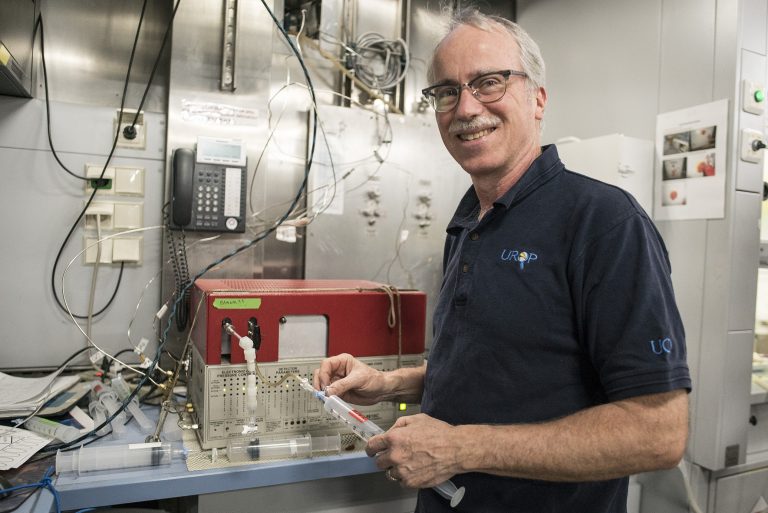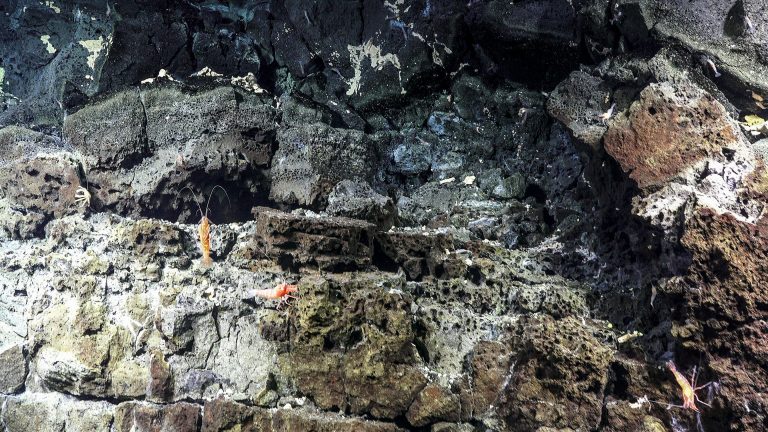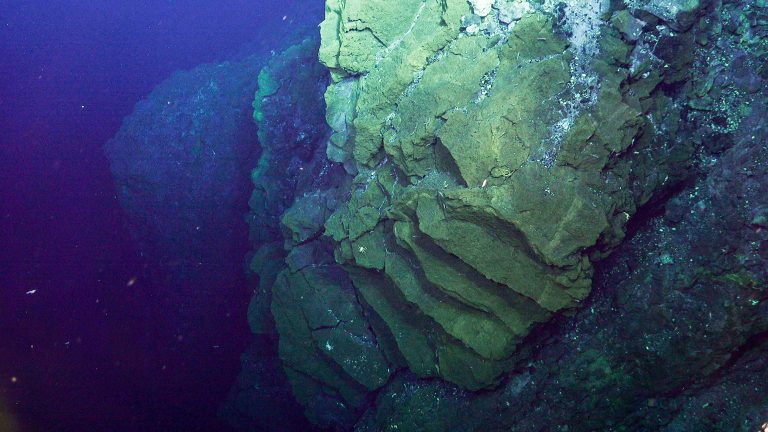The West Mata Volcanic Group is unique. The tectonics of the place are like no other, and so is the opportunity that theses volcanoes offer to scientific research. Each of the volcanoes may be similar in composition, but each is at a different stage of evolution, which presents the scientists onboard R/V Falkor an invaluable chance to observe several phases of volcanic and hydrothermal processes during a single expedition. This is why assembling an interdisciplinary team – each with its own set of skills and complementary objectives – is so important. Geology, biology, and chemistry experts are making sure that every angle is considered when it comes to reconstructing the volcanic idiosyncrasies of the Matas.
Dr. David Butterfield, Chemical Oceanographer, is particularly interested in the chemical properties of hydrothermal seawater around the volcanoes and their relationships to the biological communities that inhabit every site. “Seawater penetrates into the porous rocky crust and reacts with hot rock and magmatic gases to produce hydrothermal fluids. The chemical composition of the fluids relates to the geologic processes that are going on below the seafloor. Different geologic environments have different fluid chemistry,” explains Dr. Butterfield. Most of his work at sea revolves around collecting water samples and preparing them for later analysis ashore, while making observations onboard.

Sulphur
One of the main differences between arc volcanoes and mid ocean ridge volcanoes is the form of sulphur that comes out of them. Here, in the Northern waters of the Kingdom of Tonga, ROV SuBastian is spotting small, bright, yellow blobs of native Sulphur that oozed out in molten form and solidified.
Molten sulphur is a product of the type of magmatic gas that is being emitted. “There is a lot of sulphur dioxide in some of the relatively shallow arc volcanoes, and when you mix it with water it makes sulphuric acid and sulphur, which can accumulate. That is why we have come across these little ponds of molten Sulphur in some places,” Dr. Butterfield explains. “If the volcanoes are producing a lot of sulphur gas, that definitely has a big impact on the chemistry of the water.”
When concentrated and hot, sulphuric acid can quickly dissolve the rock, releasing its major elements right into the seawater. These dynamics can have different impacts in ocean chemistry than those of normal hot-springs in mid ocean ridges. That is why the fluids in these volcanoes, especially when they are erupting, are very different from anything else the team has seen. “We are still trying to figure out how volcanic eruptions effect the overall chemical balance of the oceans. And we don’t have good quantitative numbers of how much iron or aluminium or other elements might be coming out during the eruptions: it could be quite a lot. So coming out here to study these active volcanoes is a way of getting some estimate of how they impact ocean chemistry,” says Dr. Butterfield.

Acid
Once ROV SuBastian is back on deck after its twelve-hour long dive of the day, the scientists move quickly to retrieve all the samples before they start to degrade in their new, out-of-water environment. Drs. Butterfield, Kevin Roe, and Tamara Baumberger are concerned with extracting gas and analyzing the hydrothermal fluid samples. In addition, Dr. Butterfield is very interested in correlating the locations where the team has found shrimp and biology with the fluid chemistry of that particular location. “It is pretty clear that fluid pH is an important factor in animal habitats. If it gets too acidic, anything that goes into that water is going to die,” he shares. “But if the fluids react with the rock before they come out, that neutralizes some of the acids and makes it habitable.”
After the 2009 eruption, a part of the structure of West Mata’s summit collapsed and created a pit. During its eighty-seventh dive, SuBastian dived deep into it, getting the team as close as possible to where the source of the magma was, and probably still is. Dr. Butterfield observes: “The magmatic gas in the pit hasn’t reacted with the rock as much as the fluids up on top and around the base of the volcano, where we found are a lot more animals. This strengthens the hypothesis that the acidity of the water may control where the shrimp and other animals live.”

Carpe Diem
Back in 2009, when the team was able to witness the active eruption of West Mata Volcano, there was a lot of magmatic gas coming out, forming bubble streams that would pour out of the seafloor right around where the lava was coming out. Back then, the hydrothermal activity was very intense, but by 2012 – when the experts revisited the site – the system was quiet. This time, hydrothermal vents are showing more activity again, which is testament to the ever-changing volcanic cycle of West Mata.
Dr. Butterfield was excited about the possibility of witnessing another underwater eruption during the current Underwater Fire expedition, but that no longer seems to be in the cards. That is OK, he says, because the team still gets an opportunity to see the volcano in a different stage of its evolution. This is his third visit to the area: one he expects will help him fill in some of the blanks of his on-going research, enabling him and the determined scientific team he belongs to, to paint a more complete picture of one of the most volcanically active places of Earth.

